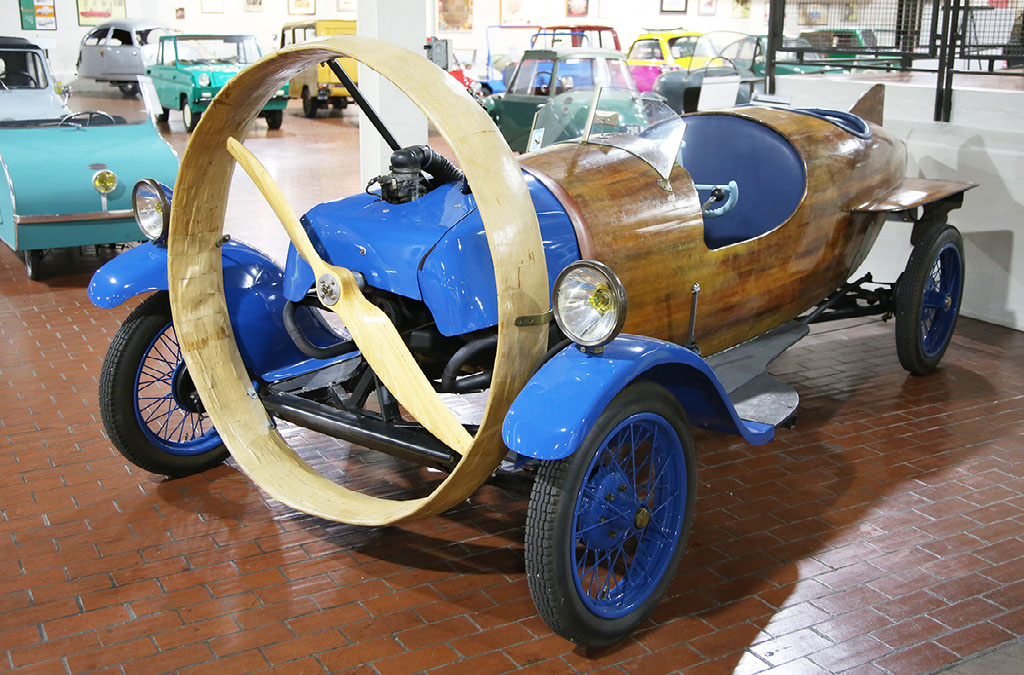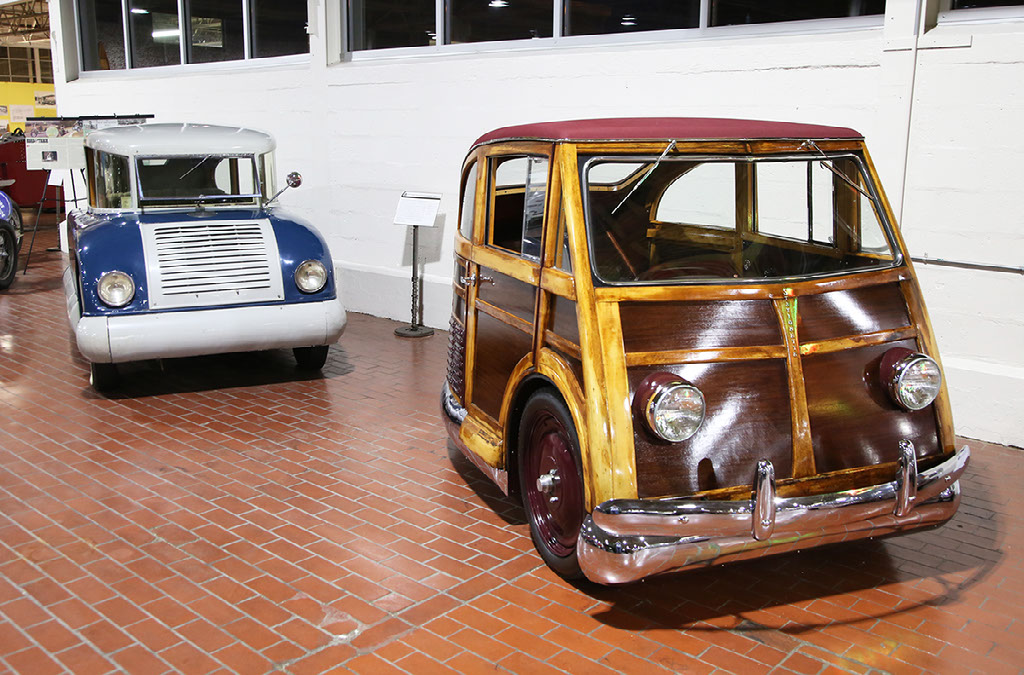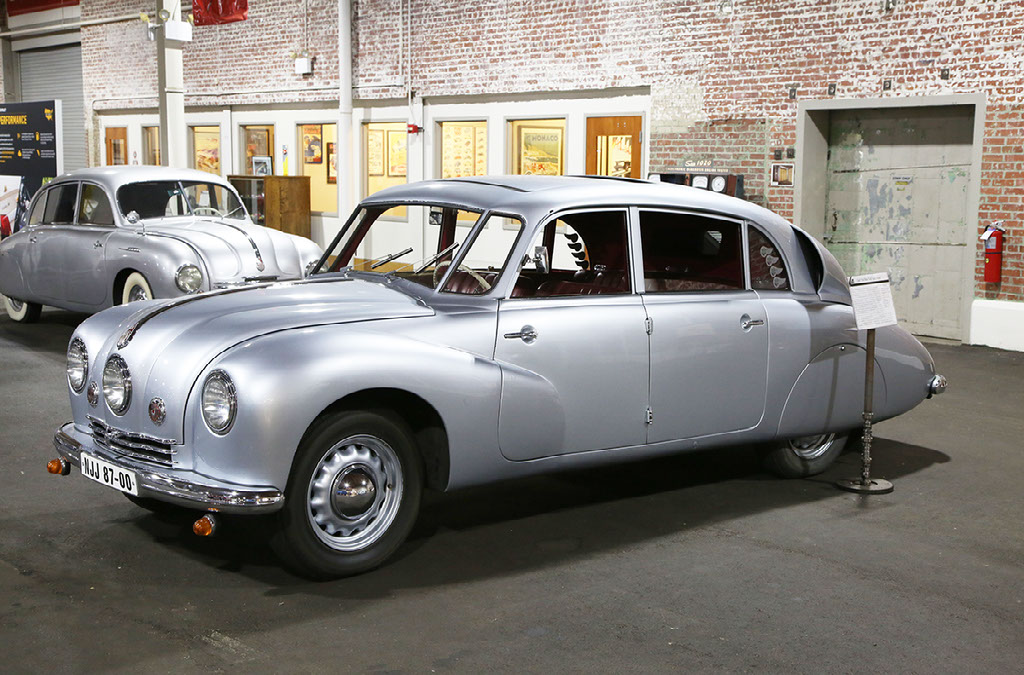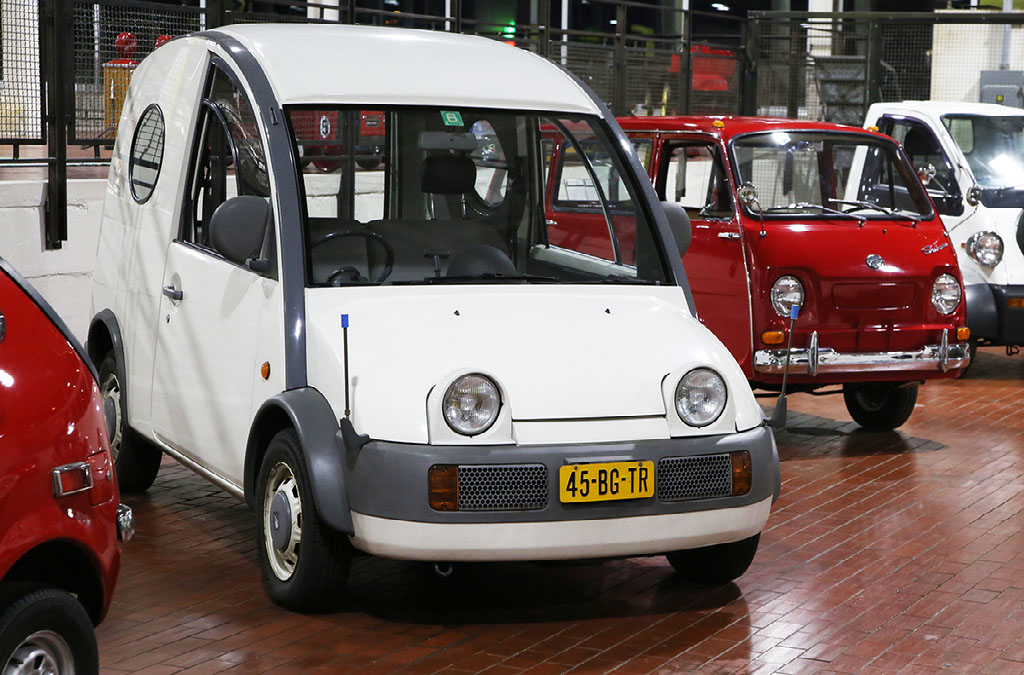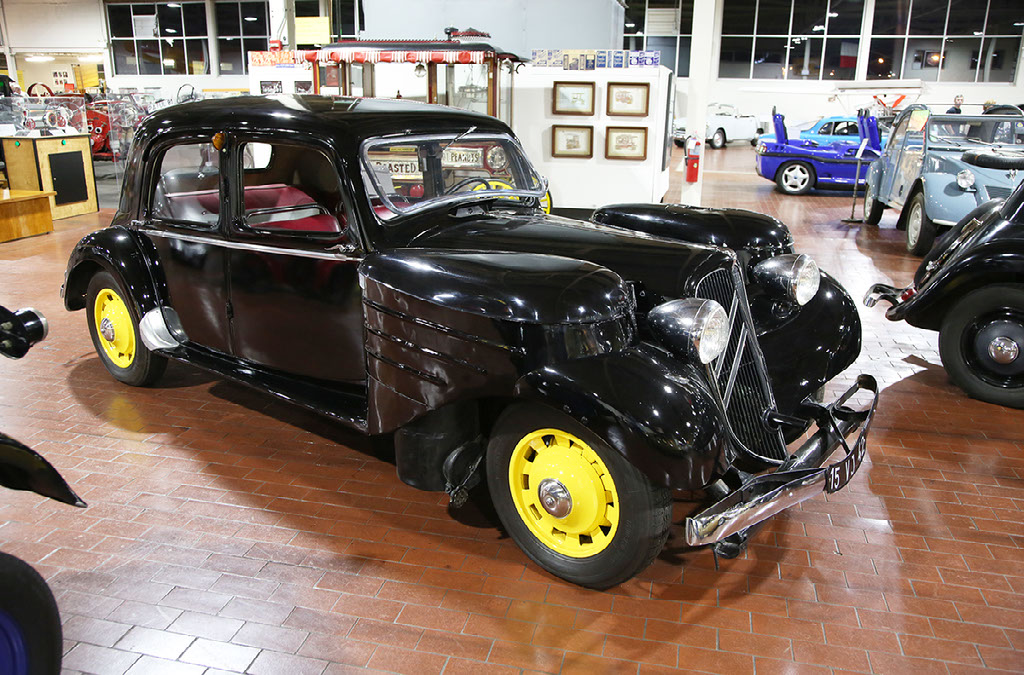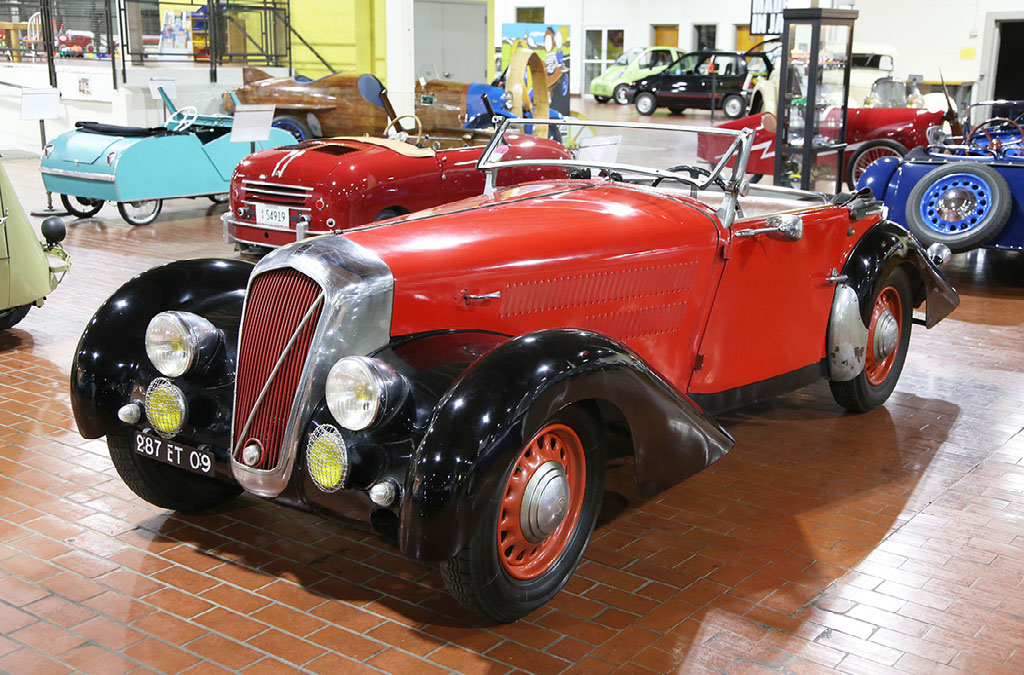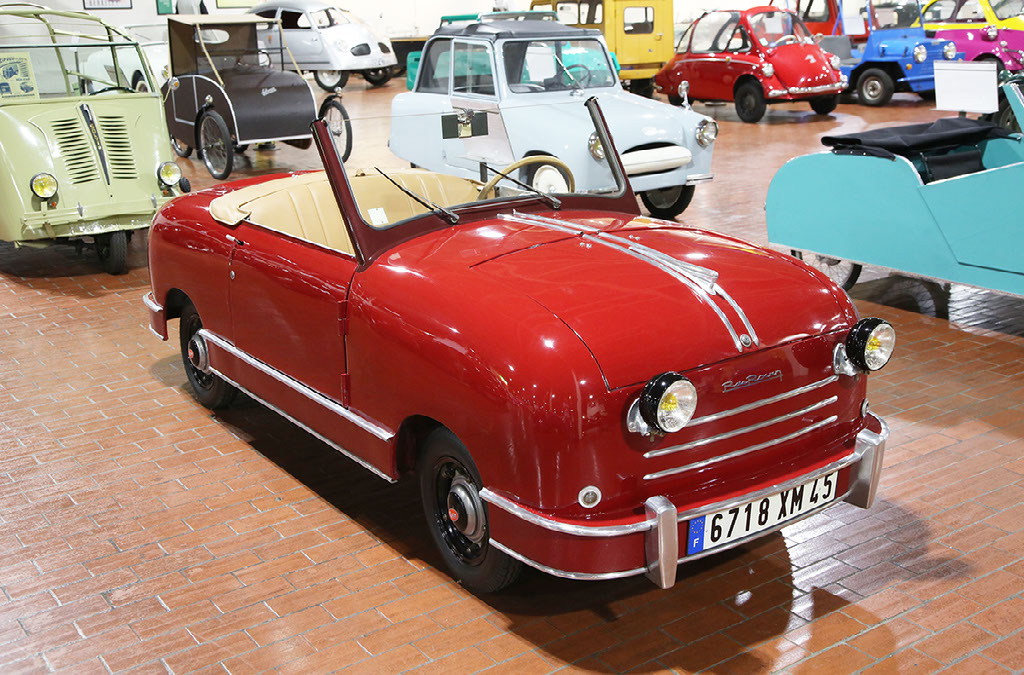Lane Motor Museum by John Lamm
Automobile museums are often known for one particular variety of cars. It could be race cars. American iron. German machines. A Musée de l’Automobile featuring French cars. At the Lane Motor Museum in Nashville the defining word is eclectic.
1965 Matra D’Jet 5-Just one of the many French cars in the Lane Motor Museum, this one came to be when the aeronautical and armaments firm, Matra, took over Rene Bonnet’s car company. A mid-engine fiberglass coupe, the drivetrain features a 79-horsepower, Gordini-tuned 1108-cc Renault engine.
1924 Sima-Voilet-The Sima-Violet cyclecar has a front engine and rear drive, and is powered by a 2-cylinder, air-cooled 2-stroke engine and a 2-speed transmission. It’s unknown how many were built, but a 1.5-liter flat-4 version finished 3rd in the 1926 Boulogne Grand prix.
1933 Panhard-Levassor 6 DS RL-From one of the originators of the automobile, this Panhard-Levassor was bought in 1933 for (in today’s dollars) $2700. Originally built with 4.1-liter inline-6 sleeve-valve engine, that was replaced with a 4.8-liter version. The automaker built 131 6 DS RL models.
There will no doubt be a few vehicles in Lane’s 150-car display you will recognize. Then again, many will leave you glued to the well-written description plaques after having likely muttered something like, “What the heck is that?”
How about the 1928 Martin Aerodynamic? A Hewson Rocket? Or the Georges Irat 11CV? The goggle-eyed Messerschmitt looks downright common. As does a pair of Citroën 2CVs.
You can get a look at the collection plus information about hours of operation and directions at www.LaneMuseum.org. But really, wouldn’t you rather see the
Autonacional Biscuter or Baldi Frog for real? So the next time you’re in Nashville, between the music and barbecues and before the honky tonks, try the Lane. We guarantee you will come away smiling.
